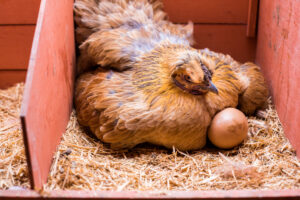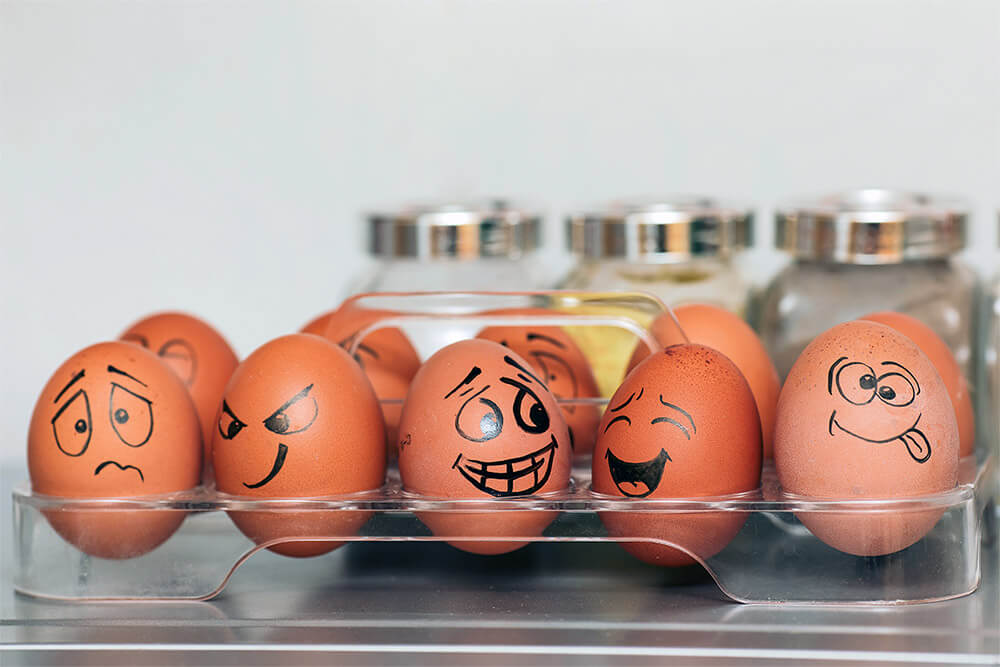
There is a lot of public interest regarding eggs. They are a relatively cheap source of protein, and they are commonly eaten for breakfast in the United States and as components of other dishes. Eggs are also a healthful and highly-valued item in children’s diets. Given their popularity, production practices related to laying hens have been a point of contention. This is especially true in states where they have proposed or passed legislation related to animal welfare.
I previously detailed what to “look out for” in consumer research. In this article, I am walking through a recent collaboration’s approach to just BEGIN to answer ONE question about consumer demand and perceptions: which egg laying hen cage type best fits consumer preferences?
We evaluated three housing options: enriched colony, aviary housing and conventional cages from several different perspectives.
- Enriched colony systems – Enriched colony systems house 60 to 250 hens in large houses (larger than conventional cages) equipped with perches, nesting areas and material to facilitate foraging and dust bathing. These systems can house up to 100,000 or more hens in each building.
- Aviary housing – Cage-free aviary systems allow hens to roam throughout various sized sections of a building. Each section of an AV housing system contains perches, nesting areas and dust-bathing material. There can be up to 80,000 or more hens per building.
- Conventional cage housing – Cages house four to nine hens. Approximate space per hen is 80 square inches. There may be thousands of cages, often totaling 200,000 hens in each building.
Study 1
Ochs, Daniel, Christopher Wolf, Nicole Olynk Widmar, Courtney Bir. (2018). “Consumer Perceptions of Egg-Laying Hen Housing Systems.” Poultry Science. 97(10): 3390-3396. DOI:10.3382/ps/pey205.
The Question
What is the alignment between consumers’ beliefs about what a cage type provides and what the cage actually provided?
The Stats
- Nationally representative online survey of 2,813 people
- Methods used: Likert Scales, simple questions
- We asked people if cage type had a positive, negative or no impact on hen health and stress, hen behavior, the environment, natural resource use efficiency, worker health and safety, food safety and food quality. We compared their answers to documented impacts.
The Findings
People were at least somewhat honest. When asked their knowledge level, from a scale of 1 (extremely unknowledgeable) to 5 (extremely knowledgeable), regarding farming practices used in egg production, 46 selected a two or less. Thirty-one percent considered themselves neutral. Only 5.6 percent of respondents correctly indicated that free-range negatively impacted hen health and stress when compared to conventional cage housing. Fifty-seven percent of respondents correctly identified that enriched colonies had a positive impact on hen behavior.
Table 1. Impact on attributes regarding the move from conventional housing to different cage types as indicated below. Percentage of respondents who gave the correct answer:
| Cage Type | |||
| Attribute | Free-Range | Cage-Free Aviary | Enriched Colony |
| Hen health and stress | 5.6% (Negative) | 6.9% (Negative) | 30.5% (No Impact) |
| Hen behavior | 74.1% (Positive) | 71.6% (Positive) | 57.2% (Positive) |
| Environmental impact | NA | 6.9% (Negative) | 50.3% (Positive) |
| Natural resource use efficiency | NA | 7.2% (Negative) | 38.5% (No Impact) |
| Worker health and safety | NA | 6.6% (Negative) | 45.2% (No Impact) |
| Food safety | 32.7% (No Impact) | 33.4% (No Impact) | 39.7% (No Impact) |
| Egg quality | 25.7% (No Impact) | 28.1% (No Impact) | 35.9% (No Impact) |
The Take-Home
The U.S. public perceives cage-free aviaries as achieving essentially the same positive impact on hen health and stress, hen behavior, environmental impact and other important attributes as eggs produced in free-range systems. Most respondents did not recognize the potential for a negative impact on worker health and safety and hen health and stress from the transition from conventional cages to alternative housing systems.
Study 2
Ochs, Daniel, Christopher Wolf, Nicole Olynk Widmar, Courtney Bir. (2019). “Is there a “cage-free” lunch in US egg production? Public views of laying hen housing attributes.” Journal of Agricultural and Resource Economics. 44(2): 345-361.
The Question
What attributes do people feel are most important when purchasing eggs?
The Stats
- Nationally representative online survey of 2,574 people
- Methods used:
- Likert Scale – asks respondents to rank the importance question on a scale from 1 to 5.
- Forced rank asks respondents to put things in order from most important to least important.
- Best-worst scaling is a choice experiment where respondents are asked the most important and least important attribute several times. Those choices are then used to estimate relative preference for each attribute in the set, with all shares necessarily adding up to 100%.
- Attributes studied were health and safety, hen mortality, hen foot condition, hen behavior, hen stress, hen cannibalism/aggression and hen feather condition using all of these methods.
The Findings
Using the results to establish a rank of the attributes, we found a lot of ties for first place using a Likert Scale. This makes sense when you realize that with Likert Scales, people don’t have to make trade-offs. They can say they want everything! There was more variation in rank using the forced rank and best-worst scaling methods.
Table 2. Ranking of laying hen production attributes using three different methods.
| Method used to elicit preferences | |||
| Attribute | Likert-Scale | Forced Rank | Best-Worst Scaling |
| Hen mortality | 1 | 3 | 1 |
| Hen foot condition | 1 | 6 | 6 |
| Hen behavior | 1 | 1 | 1 |
| Hen stress | 1 | 1 | 1 |
| Hen cannibalism/aggression | 1 | 5 | 4 |
| Hen feather condition | 7 | 7 | 7 |
| Worker health and safety | 1 | 4 | 7 |
The Take-Home
There are many differences based on the method used!
Overall:
- The most important laying hen welfare attributes for the average U.S. consumer were hen behavior, hen stress and hen mortality.
- Cannibalism/aggression and worker health and safety were of intermediary importance.
- Least important were hen feather condition and hen foot condition.
- Consumer preferences are best met by enriched colony housing. This is at odds with the perceived consumer/interest group preference for free-range housing.
Study 3
Wolf, Christopher, Daniel Ochs, Courtney Bir, John Lai, Nicole Widmar. “Hen Housing System Information Effects on U.S. Egg Demand.” Food Policy. 87:101743. DOI:10.1016/j.foodpol.2019.101743.
The Question
What are respondents willing to pay for different housing types and other egg attributes? Housing types included were aviary, enriched colony and conventional. Other attributes included were size, color and verifier.
The Stats
- Nationally representative online survey of 2,813 respondents
- Method used: Willingness to pay choice experiment
- We included an information treatment for some respondents that explained the housing types to allow evaluation of whether or not providing information changed people’s preferences
The Findings
Respondents who saw videos showing and describing hen housing systems were willing to pay $0.50/dozen less for the cage-free aviary housing when compared to conventional cages. Of those who saw the video, people were willing to pay $0.51 less for a brown egg than a white egg.
People were willing to pay a positive amount for all verification entities studied when compared to no verification. When considering attributes such as housing type or other production practices that cannot be readily observed by the end consumer, verification of attributes can become more important. Respondents were willing to pay a negative or zero amount for medium, extra-large and jumbo eggs when compared to size large eggs. The opt-out variable tells us the level of discomfort a respondent experiences from having to walk away from an egg buying experience. Think of it as if you went to the store looking for a particular type of egg and they didn’t have it. That ‘oh shucks’ feeling you have from walking away is measured in dollars for opt-out.
Table 3. Respondent WTP for laying hen production attributes.
| Variable | WTP/dozen Video n=1353 | WTP/dozen No video n=1460 |
| Enriched Colony | $0.52 Ψ | $0.7 Ψ |
| Cage-Free Aviary | $0.51 Ψ | $1.01 Ψ |
| Brown | -$0.23 Ψ | -$0.13 Ψ |
| USDA Verification | $1.16 Ψ | $0.91 Ψ |
| Third Party Verification | $0.61 Ψ | $0.43 Ψ |
| Industry Verification | $0.77 Ψ | $0.56 Ψ |
| Size Medium | -$0.25 | -$0.27 |
| Size Extra-Large | -$0.06 | -$0.08 |
| Size Jumbo | $0 | $0.04 |
| Opt-Out | -$5.67 Ψ | -$5.23 Ψ |
Ψ The WTP is statistically different between those who saw the info shock video and those who did not.
The Take-Home
Those who are uninformed about hen housing systems but are willing to pay more for eggs produced in “cage-free” systems may be spending for a label they assume or think increases hen welfare.
General Conclusions
- Read studies carefully!
- What can they really say with their sample?
- Did they take precautions to minimize bias and ensure data quality?
- It takes a lot of methods and a lot of work to answer even “easy” or small consumer questions.
- Consumers change! Potential shift from restaurant to at-home eating due to COVID-19 means that these food-related preferences are probably ripe for reevaluation …
ConsumerCorner.2020.Article.04





